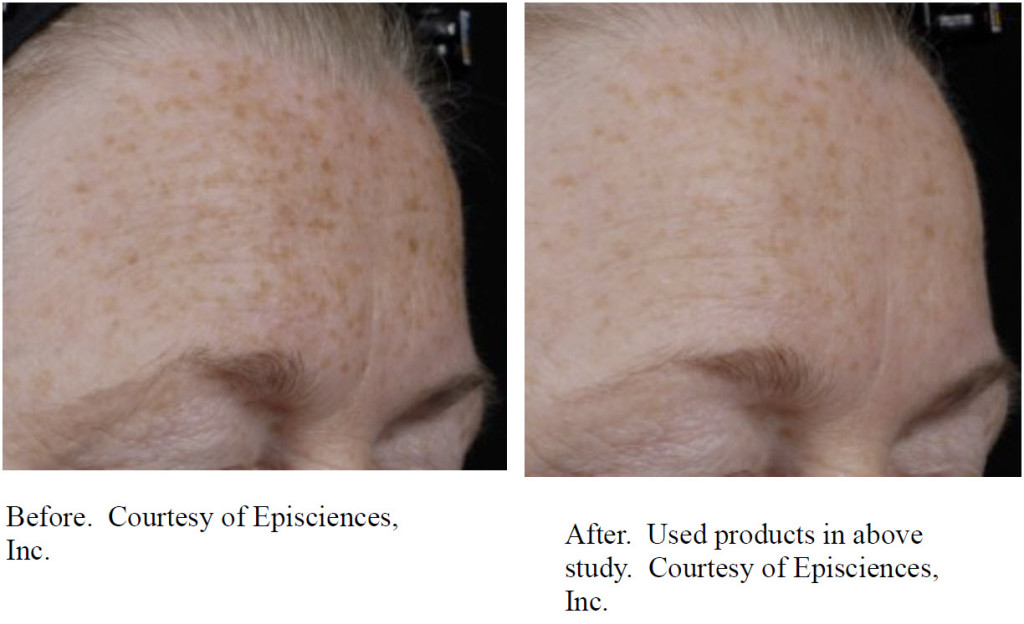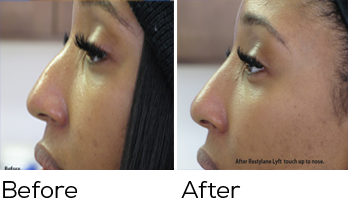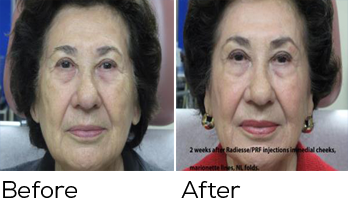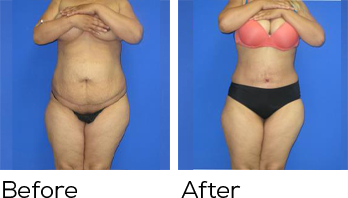Treating abnormal pigmentation
The main determinant of a skin color is melanin. The production of this pigment is a very complex process that involves 14 steps and is under the control of 250 genes.
Melanin is produced within melanosomes which exist in the melanocyte cytoplasm.
The pigment is then transferred to keratinocytes which distribute melanin in the upper layers of the skin. The melanin acts as a physical barrier to protect the tissue from harmful ultraviolet radiation before it is degraded.
There are two types of melanin produced by the melanosomes.B Eumelanin is a brown-black pigment found in higher amounts in darker skin types and those chronically exposed to UVR.B Phaeomelanin is a red-brown red-brown pigment found in people with fair skin types.
There is little difference between the number of melanocytes in dark and fair skinned individuals.B The difference is in the cell activity.B In dark skin the pH is neutral and this is optimal for melanogenesis or production of melanin, and in lighter skinned individuals the pH is lower and inadequate for enzymatic activity hence less melanin is produced.B Also lighter skinned individuals who produce phaeomelanin do not protect the skin against harmful UVR compared to the eumelanin produced by darker skin individuals because the former produces higher concentrations of free radicals potentially leading to more DNA damage, skin cancer and other skin diseases.1
Patients come in complaining of hyperpigmentation.B These are common complaints that can be difficult to treat.B This results from increased melanin production and distribution in the epidermis and dermis along with abnormal macrophage engulfment. The deeper the pigment the more difficult the condition is to treat.B What I see mostly is patients with lentigo or sun spots and melasma, dyschromiaB and post-inflammatory hyperpigmenation. The most common cause of abnormal pigment is excessive exposure to UV radiation.
There are diseases such as Addisonb’s, Macular Amyloidosis, Hemochromatosis, Rielb’s melanosis that can cause increase melanin in the epidermis.B Dermal deposition of pigment can occur with birth marks such as blue nevi, nevus of OTA, nevus of ITO and Mongolian spots are resistant to topical therapy.B They can be treated with various lasers.B Hyperpigmentation caused by deposition of drugs like minocycline, phenothiazines, OCPb’s, and heavy metals like bismuth, arsenic, gold, iron, lead, mercury and silver are not responsive to topical therapy.2B
TREATMENT OF HYPERPIGMENTATION
B Most of the lightening agents used to treat hyperpigmentation work by inhibiting the rate limiting enzyme-tyrosinase.B This process occurs inside the melanocyte.
Hydroquinone or HQ is one of the most commonly used compounds for skin lightening.
Hydroquinone has been used since the 1950b’s as over-the-counter skin bleaching products and since the 1960b’s as a commercially available medical product.B Since 2001 , HQ is no longer available in Europe due to its risk of toxicity and adverse reactions.B There they use arbutin which is an analog of HQ and botanicals that containB naturally occurring HQ and arbutin.3
Another common combination prescription is HQ, tretinoin (TR), and corticosteroids (CS),B which is found in Triluma.B The FDA states itb’s efficacy is only 51%. There was a study in Senegal of several thousand women who used skin-lightening agents that contained a combination of substances that includes HQ, CS, and mercury salts along with other compounds.B When applied to large surface areas, these can have irreversible cutaneous adverse effects such as patchy hyper- or hypopigmentation, skin atrophy, stretch marks, delayed wound healing and can mask or promote skin infections due to the chronic steroid use.B Cases of skin cancer have also been thought to be attributed to these compounds.4
Other agents used to treat hyperpigmenation include azelaic acid which is derived from grains such as wheat, rye and barley.B Other commonly used non-prescription agents include kojic, ascorbic, glycolic and salicylic acids, bearberry, licorice and mulberry extacts, niacinamide, soy, N-acetyl glucosamine, arbutin, aloe,and emblica.
Dr. Carl Thornfeltb’s Epionce line is the result of 30 plus years of clinical research.B His line is derived from botanicals that have a very low irritation rate. The return rate for irritation is 0.3%.B B B His company has conducted 16 clinical studies which showed Epionce products scored superior to each product against they were tested.B They were tested against prescription products like tretinoin 0.05%, hydroquinoine 4% , and metronidzole 0.75%.
There are over 130 herbal extracts that inhibit melanin production in vitro.B Only 29 have been analyzed in blinded clinical trials.B Dr. Thornfeldt conducted a double blinded clinical trial in which he tested his natural ingredient formations that block 13 steps in the production and distribution of melanin. He compared his natural herbal products against tretinoin 0.05% and hydroquinone 4%.B His conclusionB was thatB his novel herbal products were just as effective as perscription tretinoin 0.05% and hydroquinone 4% in treating in treating full-face melasma, mottled hyperpigmentation and dyschromia.B These products were continued an additonal 12 months and there was documented continual improvement of hyperpigmentation without clinical rebound or resistance, sensitization or irritation to continued therapy.5
B TheB products tested were MelanoLyte Tx and MelanoLyte Pigment Perfecting Serum.B B I personally use both of these products because I have melasma.B I have noticed that these products have lightened the pigment as well as 4% hydroquinone and 0.1% tretinoin.B They are much less irritating and I have been on them over a year with continued improvement. I love these products.

References
- Chadwich, S, et al.B Abnormal pigmentation with cutaneous scars: A complication o wound healing.B Indian Journal of Plastic Surgery.2012 May-Aug.15(2):103-111.
- Alexis AF, et al.B Common dermatologic disorders in skin of color: a comparative practice survey.B Cutis 2007;.387-394.
- Ob’Donoghue JL.B Hydroqinone and its analogues in dermatology-a risk-benefit viewpoint.B J Cosmet Dermatol. 2006 Sep;5(3):196-203.
- Sun-lightening cosmetics: frequent, potentially severe adverse effects.B Prescrire Int. 2011 Sep;20(119):209-213, 215.
- Thornfeldt, C, et al.B Blockade of Melanin Synthesis, Activation and Distribution Pathway by a Nonprescription Natural Regimen Is Equally Effective to a Multiple Prescription-Based Therapeutic Regimen.B Journal of Drugs in Dermatology. 2013 :12(12):1449-1454



